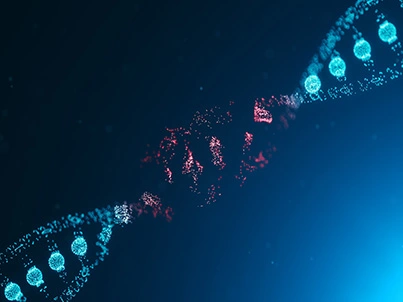In the realm of biotechnology, the construction of yeast libraries has emerged as a pivotal tool for fostering innovation and research advancement. Yeast, particularly Saccharomyces cerevisiae, is favored for its ease of manipulation, rapid growth, and well-characterized genetics. By creating diverse yeast libraries, researchers can explore a vast array of genetic variations and functional traits, enabling breakthroughs in areas such as metabolic engineering, drug development, and synthetic biology.

The construction of a yeast library, through yeast one hybrid screen or yeast two hybrid screening service, involves several key steps, starting with the selection of the appropriate yeast strain. Researchers often choose strains that exhibit desirable characteristics, such as high transformation efficiency or robust growth in specific media. The next step involves generating a collection of genetic constructs, typically through techniques such as PCR (polymerase chain reaction) amplification, cloning, and transformation.
Once the genetic constructs are ready, they are introduced into the yeast cells. This is commonly achieved using methods like lithium acetate transformation or electroporation, which facilitate the uptake of plasmids containing the desired genes. After transformation, the yeast cells are cultured to allow for the expression of the introduced genes, creating a library of genetically diverse strains.
Yeast libraries have a wide range of applications that drive innovation across various fields of biotechnology:
Metabolic Engineering: By constructing libraries that contain genes involved in metabolic pathways, researchers can screen for strains with enhanced production of valuable metabolites, such as biofuels, pharmaceuticals, and industrial enzymes. This approach allows for the optimization of metabolic pathways and the identification of novel compounds.
Protein Expression and Purification: Yeast systems are widely used for the expression of recombinant proteins. Yeast libraries enable the screening of various expression constructs and conditions, leading to the identification of optimal systems for high-yield protein production. This is particularly important for therapeutic proteins and enzymes used in industrial processes.
Synthetic Biology: Yeast libraries serve as a foundational tool in synthetic biology, where researchers design and construct new biological parts and systems. By screening diverse genetic combinations, scientists can engineer yeast strains to perform specific functions, such as biosensors or biocatalysts, that are essential for environmental monitoring and industrial applications.
Drug Development: In pharmaceutical research, yeast libraries can be used to identify potential drug targets and assess the effects of various compounds on cellular pathways. By constructing libraries that express human disease-related genes, researchers can model disease states in yeast, facilitating the discovery of novel therapeutic strategies.
Despite the numerous advantages of yeast library construction including yeast two hybrid screening service, there are challenges that researchers must navigate. One major consideration is the complexity of library design, which requires careful planning to ensure diversity and representation of the desired traits. Additionally, the screening process can be labor-intensive, necessitating robust selection methods to identify promising candidates efficiently.
Furthermore, there is the issue of scalability. As libraries grow in size, the need for high-throughput screening techniques becomes paramount. Advances in automation and robotics are helping to address these challenges, allowing researchers to analyze large numbers of yeast strains quickly and effectively.
The future of yeast library construction in biotechnology is promising, with ongoing advancements in genomic technologies and synthetic biology. Innovations such as CRISPR-Cas9 gene editing and next-generation sequencing are set to enhance the precision and efficiency of library construction and screening.
Moreover, as the demand for sustainable and eco-friendly solutions continues to rise, yeast libraries will play a crucial role in the development of bio-based products and processes. By harnessing the power of yeast, researchers can contribute to a more sustainable future, addressing global challenges such as energy production, waste management, and food security.
In conclusion, yeast library construction stands as a key tool for advancing innovation in biotechnology. Through its diverse applications and the ability to rapidly screen for desirable traits, yeast libraries facilitate breakthroughs in metabolic engineering, protein production, synthetic biology, and drug development. As technology continues to evolve, the role of yeast libraries in shaping the future of biotechnology will undoubtedly expand, paving the way for novel solutions to complex challenges.

Singapore Global Headquarters: 112 ROBINSON ROAD #03-01
Germany: Kreuzstr. 60, 40210 Düsseldorf
United States: 2 Goddard, Irvine, CA 92618
Singapore Global Headquarters: 112 ROBINSON ROAD #03-01
Germany: Kreuzstr. 60, 40210 Düsseldorf
United States: 2 Goddard, Irvine, CA 92618